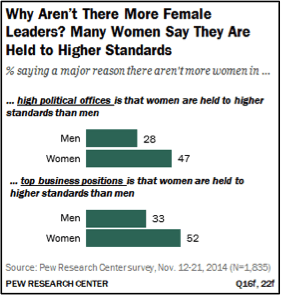Depending on the job, gender wage gaps in the United States are closing. That is good news particularly for recent female college graduates who could very well be soon earning more money than their male counterparts.
For quite some time, “77 cents” has been the rallying cry for gender pay equality, citing what a woman typically earns to the man’s earned dollar however recent analysis suggests the gap is closing in certain places. As Time reports, “the wage gap shrinks from 77 cents on the dollar to 97 cents for recent college grads ages 22 to 27.” Women who majored in certain fields are even finding they are out-earning younger males. That is true in the social services, where these women earn 16 percent more than men; industrial engineering, which sees women earning 10 percent more than men; and art history, coming in at nine percent.
 To be sure, there is substantial room for improvement. In the overall workforce, women take 469 days to earn as much as men earn in 365 days. While there are industries where women are earning better wages than men, this is far from the norm. The top three jobs held by women are (1) secretary, which has not changed since 1950; (2) nurse and (3) teacher, where women hold 70 percent of the jobs but earn only 87 cents to the dollar compared with men. “In an industry that women dominate, they still earn less than men,” according to CNN.
To be sure, there is substantial room for improvement. In the overall workforce, women take 469 days to earn as much as men earn in 365 days. While there are industries where women are earning better wages than men, this is far from the norm. The top three jobs held by women are (1) secretary, which has not changed since 1950; (2) nurse and (3) teacher, where women hold 70 percent of the jobs but earn only 87 cents to the dollar compared with men. “In an industry that women dominate, they still earn less than men,” according to CNN.
Recent findings indicate it is not work-life balance nor career interruptions of motherhood that contribute to the disparity in corporate leadership positions; rather it has more to do with facing more difficult standards than men face. “Instead, topping the list of reasons, about four-in-ten Americans point to a double standard for women seeking to climb to the highest levels of either politics or business, where they have to do more than their male counterparts to prove themselves,” the Pew Research Center reports.
While there is still progress to be made, the overall outlook is improving for women in the American workforce in terms of obtaining leadership positions and the compensation that comes with these jobs. “The pipeline for female leaders seems to be widening. Women have made significant gains in educational attainment in recent decades, better positioning themselves not only for career success but also for leadership positions.” In fact, findings indicate women have outnumbered men in both college enrollment and completion rates – reversing a trend that lasted all the way into the 1970s. Furthermore, women are more likely to continue their education after college than are men.
In terms of management positions, women have gained significantly in the last 35-plus years. In 2013, statistics showed women held 52.2 percent of managerial and professional occupations in the United State; in 1968 that number was only 30.6 percent. Senior management positions however, continue to elude women.
There is still work to be done in the American job market, but women are finding men’s grip on higher paying jobs with more responsibility loosening a bit. Formal education is an important factor for women’s gains in the American workforce. Conditions are not ideal yet, but they are improving. It is a start.
